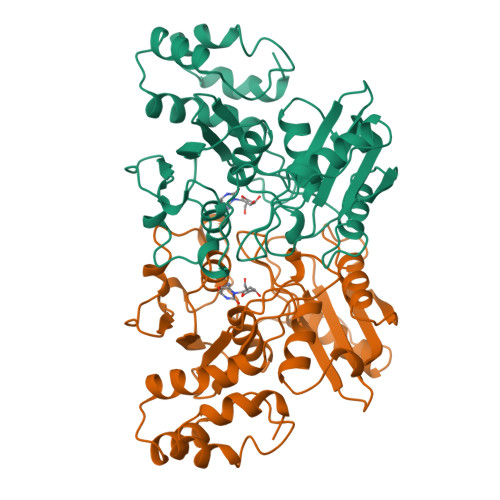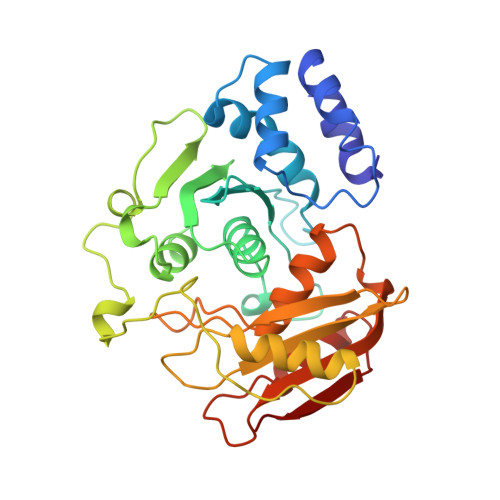Transition-state selectivity for a single hydroxyl group during catalysis by cytidine deaminase.
Xiang, S., Short, S.A., Wolfenden, R., Carter Jr., C.W.(1995) Biochemistry 34: 4516-4523
- PubMed: 7718553
- DOI: https://doi.org/10.1021/bi00014a003
- Primary Citation of Related Structures:
1CTT, 1CTU - PubMed Abstract:
Cytidine deaminase binds transition-state analog inhibitors approximately 10(7) times more tightly than corresponding 3,4-dihydro analogs containing a proton in place of the 4-hydroxyl group. X-ray crystal structures of complexes with the two matched inhibitors differ only near a "trapped" water molecule in the complex with the 3,4-dihydro analog, where contacts are substantially less favorable than those with the hydroxyl group of the transition-state analog. The hydrogen bond between the hydroxyl group and the Glu 104 carboxylate shortens in that complex, and may become a "low-barrier" hydrogen bond, since at the same time the bond between zinc and the Cys 132 thiolate ligand lengthens. These differences must therefore account for most of the differential binding affinity related to catalysis. Moreover, the trapped water molecule retains some of the binding energy stabilizing the hydroxyl group in the transition-state analog complex. To this extent, the ratio of binding affinities for the two compounds is smaller than the true contribution of the hydroxyl group, a conclusion with significant bearing on interpreting difference free energies derived from substituent effects arising from chemical modification and/or mutagenesis.
Organizational Affiliation:
Department of Biochemistry and Biophysics, University of North Carolina at Chapel Hill 27599-7260, USA.




















